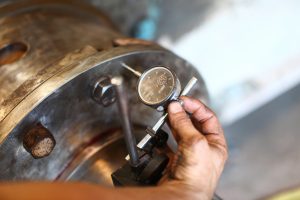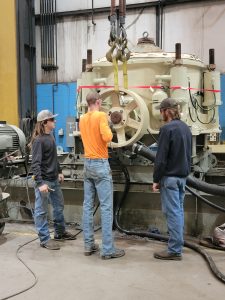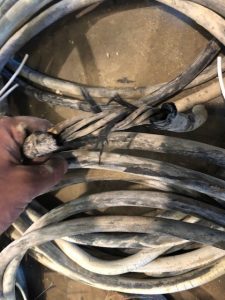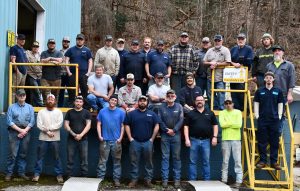The Ultimate Guide to Rock Crusher Maintenance in the Aggregate Industry
Rock crushers are the backbone of the aggregate industry, turning massive boulders into usable construction materials. Whether you’re running a jaw, cone, or impact crusher, keeping your equipment in peak condition is the difference between consistent uptime and costly breakdowns.
In this guide, we’ll cover everything you need to know about rock crusher maintenance—best practices, common mistakes to avoid, and how to extend the life of your equipment.
Why Crusher Maintenance Matters
 Downtime is the enemy in aggregate production. Every hour your crusher is offline can mean tons of lost material and lost profit. Proper maintenance ensures:
Downtime is the enemy in aggregate production. Every hour your crusher is offline can mean tons of lost material and lost profit. Proper maintenance ensures:
-
Longer equipment life – Reducing wear and tear saves money on replacement parts.
-
Improved efficiency – Well-maintained machines process material more consistently.
-
Reduced safety risks – Regular inspections help identify potential hazards before they become serious issues.
Daily Rock Crusher Maintenance Checklist
Routine checks catch small problems before they become big ones. Operators should complete these tasks every shift:
-
✅ Inspect belts, guards, and safety devices.
-
✅ Check lubrication levels and grease bearings as needed.
-
✅ Look for loose bolts, worn liners, or cracks in key components.
-
✅ Clear away buildup of dust, dirt, or material blockages.
-
✅ Listen for unusual vibrations or noises during operation.
Weekly & Monthly Maintenance Tasks
 Some inspections require a little more time but pay dividends in reliability:
Some inspections require a little more time but pay dividends in reliability:
-
🔧 Jaw Crushers: Check jaw dies for wear and adjust settings to maintain output size.
-
🔧 Cone Crushers: Inspect wear parts, adjust bowl settings, and check hydraulic systems.
-
🔧 Impact Crushers: Examine blow bars and curtain liners for wear.
-
🔧 Lubrication Systems: Test oil quality and replace if contaminated.
-
🔧 Electrical Systems: Inspect wiring, switches, and control panels for wear or damage.
Seasonal / Annual Maintenance
At least once a year—or before major production pushes—schedule deeper maintenance:
-
Replace worn liners and key wear parts.
-
Flush hydraulic and lubrication systems.
-
Calibrate automation and control systems.
-
Conduct a full structural inspection for fatigue or cracking.
-
Verify dust suppression and environmental controls are functioning properly.
Common Crusher Maintenance Mistakes to Avoid
 Even experienced teams sometimes cut corners. Avoid these pitfalls:
Even experienced teams sometimes cut corners. Avoid these pitfalls:
-
❌ Running equipment without proper lubrication.
-
❌ Ignoring small cracks, leaks, or vibrations.
-
❌ Overlooking conveyor or feeder systems connected to the crusher.
-
❌ Skipping scheduled downtime for preventive maintenance.
-
❌ Using non-OEM parts that compromise performance and safety.
Proactive Maintenance = Profit
Think of maintenance as an investment—not a cost. By implementing a proactive maintenance program, aggregate producers can:
-
Reduce unexpected breakdowns.
-
Improve overall throughput.
-
Increase resale value of equipment.
-
Boost safety and operator confidence.
Partnering With Experts
While in-house teams can handle many daily and weekly tasks, working with experienced service providers ensures your crushers run at maximum efficiency. From rebuilds to parts replacement, experts like Marion Machine provide the specialized knowledge and resources needed to keep production moving.
Machine provide the specialized knowledge and resources needed to keep production moving.
Final Thoughts
The aggregate industry runs on reliability. A disciplined approach to rock crusher maintenance helps protect your investment, improve production efficiency, and keep your crews safe.
Whether you operate a small portable plant or a large-scale quarry, make rock crusher maintenance a priority, it’s the key to crushing success in 2025 and beyond. Contact our team today!
Christopher Joyce Vulcan Materials of Winston-Salem, NC
Our Metso HP 800 Mainframe had a loose shaft and we re-fit the shaft back to OEM specs with a 2-week-turnaround to get a 3.5-million-ton-plant back up and running.